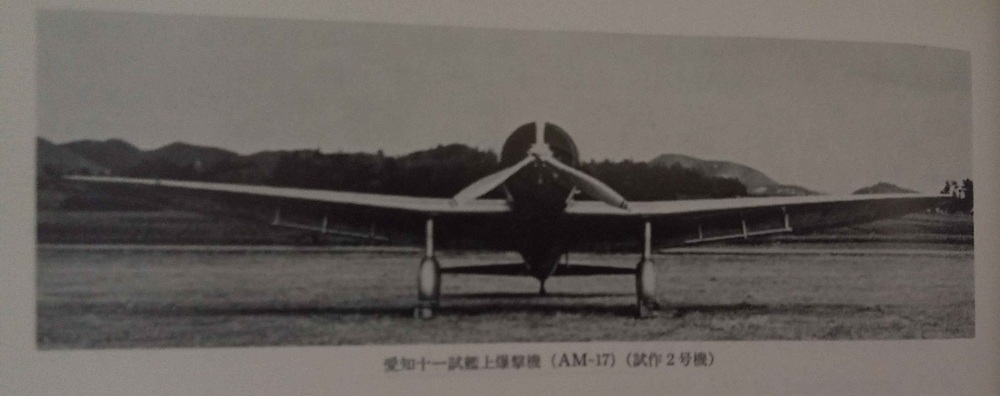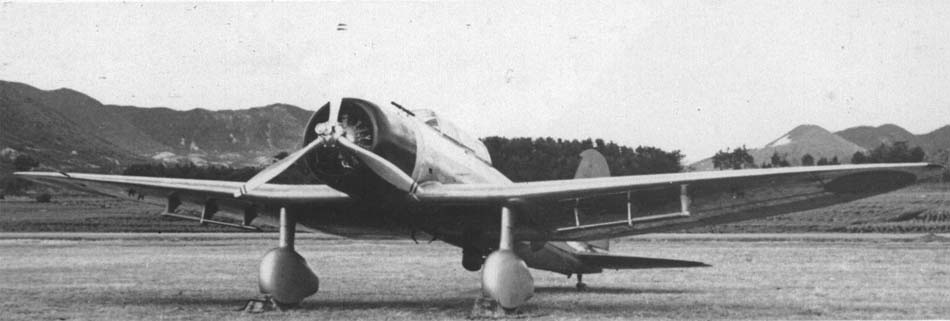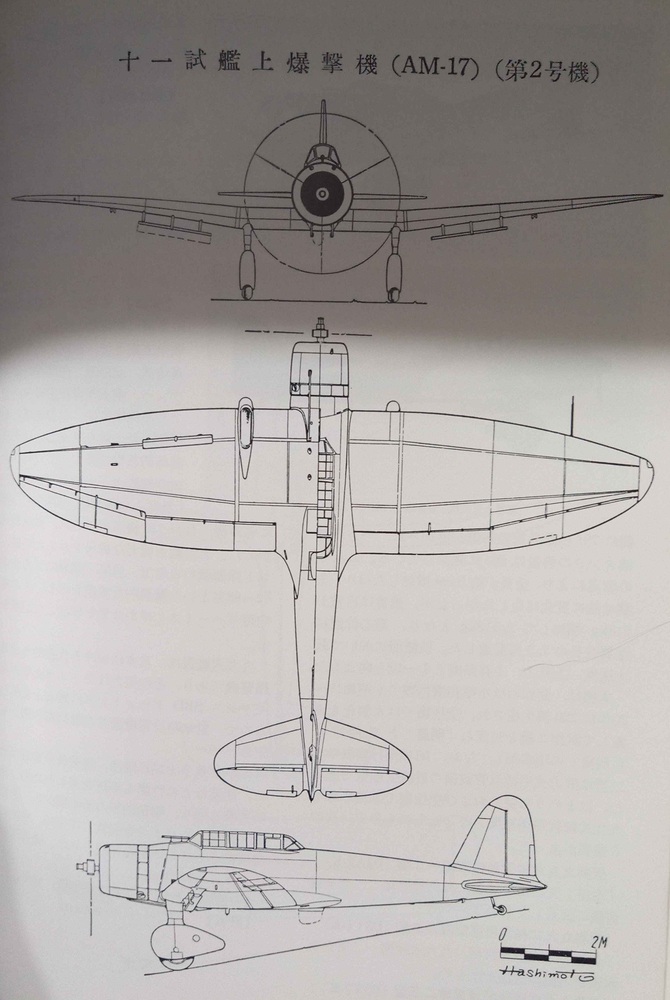- Yes
- No
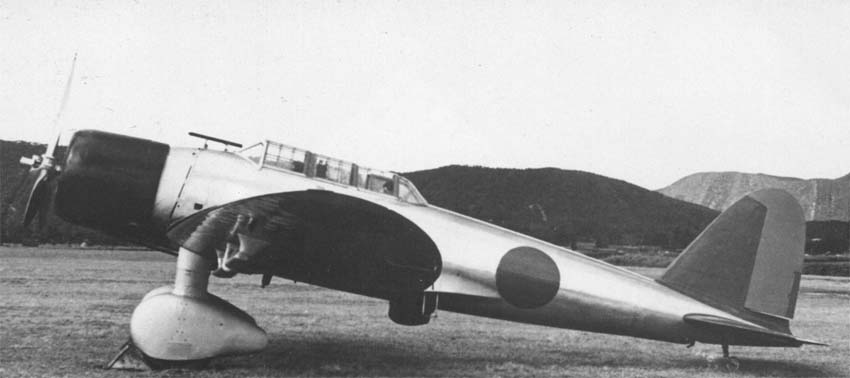
Aichi D3A prototype 2 (AM-17) (十一試艦上爆撃機)
The Aichi D3A prototype is two Japanese prototype dive bombers developed in 1937 and 1938. These aircraft bore the factory designation AM-17 and were created to meet the requirements of the 11-Shi Naval competition. Prototype 1 and 2 differ in details, and this suggestion focuses on the second prototype. This aircraft was a competitor to the Nakajima D3N.
History
In 1936, the Imperial Japanese Navy issued technical specifications for a new dive bomber to replace the Aichi D1A2 aircraft. It was required that the new dive bomber have an all-metal cantilever low-wing design. The engine was to be an improved Nakajima Hikari engine. Proposals for the new aircraft were submitted by Aichi (D3A), Mitsubishi (D3M), and Nakajima (D3N). After presenting their proposals, Mitsubishi decided to withdraw and focus on fighters. The new dive bomber project at Aichi was led by engineer Tokuhishiro Goake, and the project received the company designation AM-17. From the outset, the design was heavily inspired by the Heinkel He 70, which had been previously purchased by the Japanese Navy for testing. The aircraft was designed to be simple to reduce its failure rate and to be durable. In December 1937, the first prototype Aichi AM-17 was completed, powered by a Nakajima Hikari 1 engine with a take-off power of 550 kW (730 hp). In January 1938, the Aichi AM-17 made its first flight, and shortly thereafter it was handed over for testing to the Japanese Navy. There, it received the designation “11th experimental carrier-based bomber” (十一試艦上爆撃機). During the tests, many problems were identified in the first prototype of the Aichi D3A, including poor lateral stability, which was very dangerous during tight turns. Additionally, the aircraft tended to enter an anti-rotational spin, and the engine power was insufficient relative to the aircraft’s weight. Moreover, the aircraft exceeded the required dive speed and experienced excessive vibrations at speeds of 396-444 km/h. However, the aircraft’s rigid construction and overall flight characteristics were well regarded. To address the shortcomings of the first Aichi D3A prototype, a second prototype was built. The second prototype of the Aichi D3A was equipped with a more powerful Mitsubishi Kinsei 3 engine with a takeoff power of 618 kW (840 hp). The vertical stabilizer area was also increased, and the aerodynamic brake mounts were improved. The most significant change was made to the wings, whose span was increased from 14.1 m to 14.5 m, which increased their surface area by 2 m², from 33 m² to 35 m². Additionally, the leading edge of the wing was rounded. The second prototype was then sent for naval tests, where it competed with the Nakajima D3N aircraft. Comparative tests lasted until March 1939, and the winner was the Aichi D3A, which was accepted into service as the Type 99 Carrier Bomber. Subsequently, 6 pre-production Aichi D3A1 aircraft identical to the second prototype were built. From December 1939, serial production of the D3A1 aircraft began, which were equipped with Mitsubishi Kinsei 43 engines (and later Mitsubishi Kinsei 44).
Art about the Aichi D3A prototype 2
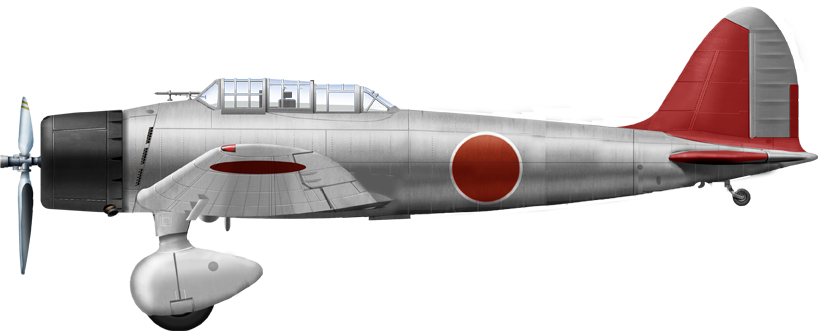
Construction description
The Aichi D3A prototype 2 is an all-metal aircraft with a low-wing configuration and fixed landing gear. In the extensively glazed cockpit are the pilot and a radio operator/gunner equipped with a swivel seat. The aircraft is powered by a Mitsubishi MK8 Kinsei 3 engine with a takeoff power of 618 kW (840 hp), which drives a metal three-blade propeller with a diameter of 3,500 mm. The armament includes two fixed Type 97 7.7 mm machine guns mounted in the fuselage above the engine and one movable Type 92 7.7 mm machine gun in the gunner’s cockpit. Under the fuselage, the aircraft can carry a 250 kg bomb, and under the wings, it can carry two bombs weighing 30 or 60 kg.
Comparison of the Aichi D3A prototype 2 with other versions D3A
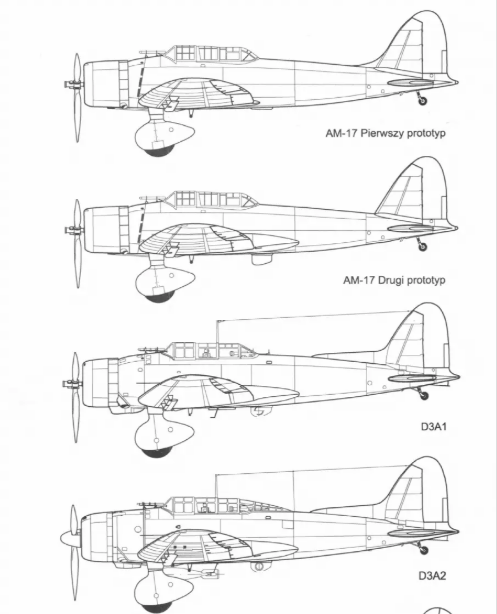
General characteristics
- Crew: 2
- Length: 9,86 m
- Wingspan: 14,50 m
- Height: 3,35 m
- Wing area: 35 m2
- Empty weight: 2050 kg
- Gross weight: 3400 kg
- Maximum Take-off Weight: ?
- Powerplant: 1 x Mitsubishi MK8 Kinsei 3 engine with a takeoff power of 618 kW (840 hp)
- Propellers: Three-blade metal variable pitch with a diameter of 3,500 mm.
Performance
- Maximum speed: 394 km/h
- Cruising speed: 296 km/h
- Range: 1630 km
- Maximum Range: 1820 km
- Service ceiling: 6000 m
- Climb Rate: ?
- Rate of climb: 7 min to 3000 m
Armament
- Guns:
- 2 x Type 97 fixed machine gun 7,7mm in the nose
- 1 x Type 92 7.7mm movable machine gun in the rear gunner’s position
- Bombs
- 1 x 250 kg bombs (Under the fuselage)
- 2 x 60 kg bombs (Under the wings)
- 2 x 30 kg bombs (Under the wings)
Special thanks
Summary
The Aichi D3A prototype 2 is an interesting aircraft for Japan in War Thunder. This plane in the game would be a faster and slightly lighter version of the Aichi D3A1, but due to the lack of a dorsal fin, it is less maneuverable and less stable in sharp turns. This aircraft is perfect for serving as a low-level dive bomber. The Aichi D3A prototype 2 could be placed in the folder with the Aichi D3A1 Model 11 (D3A1 from the game) and the Aichi D3A2 Model 22. I encourage you to discuss in the comments and to share your own knowledge on this subject.
Finally, I apologize for the linguistic and logical errors because unfortunately English is not my main language and I had to use google translator.
Internet sources
九九式艦上爆撃機 - Wikipedia
Aichi D3A - Wikipedia
Aichi D3A “Val”
Aichi D3A
Aiči D3A [Val] : Aiči
Уголок неба ¦ Aichi D3A
Warplanes of Japan: Aichi D3A
Book sources
- Japońskie Samoloty Marynarki 1912-45 część I (Japanese naval aircraft 1912-45 part I) page 182-114-118
Japonskie Samoloty Marynarki 1912-45 | PDF - Japanese Aircraft of the Pacific War page 271-276
- (Wydawnictwo Militaria No.145) Aichi D3A Val/Nakajima B5N Kate | PDF
- 日本航空機辞典 1910年(明治43年)~1945年(昭和20年) 上巻 (Encyclopedia of Japanese Aircraft 1910 (Meiji 43) – 1945 (Showa 20), Volume 1) page 218-219
- 野沢正『日本航空機総集 愛知・空技廠篇』出版協同社, page 82-85

Thank you for reading the suggestion, see you in the next one. Good luck pilots

